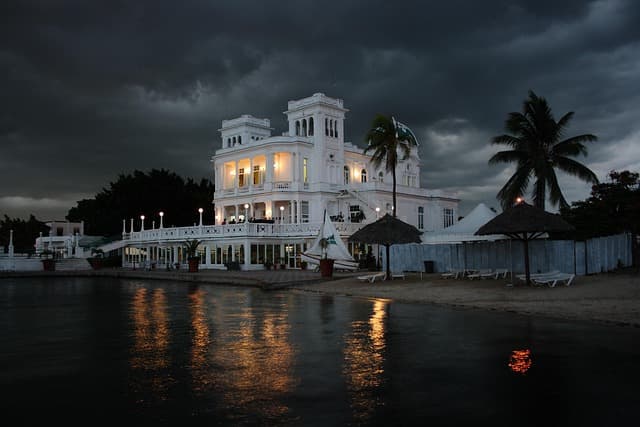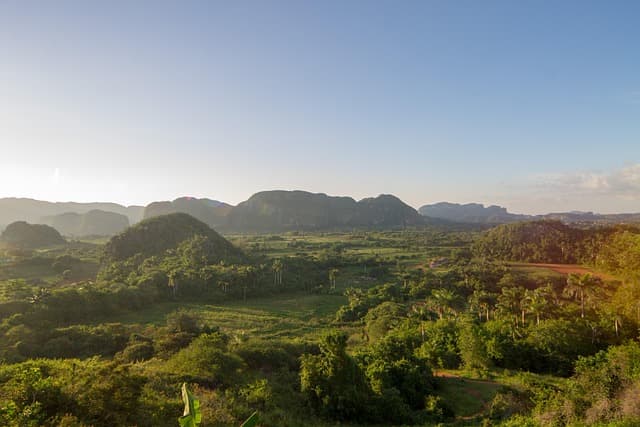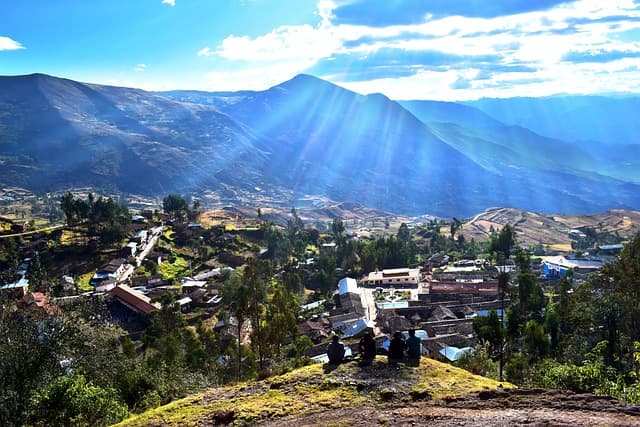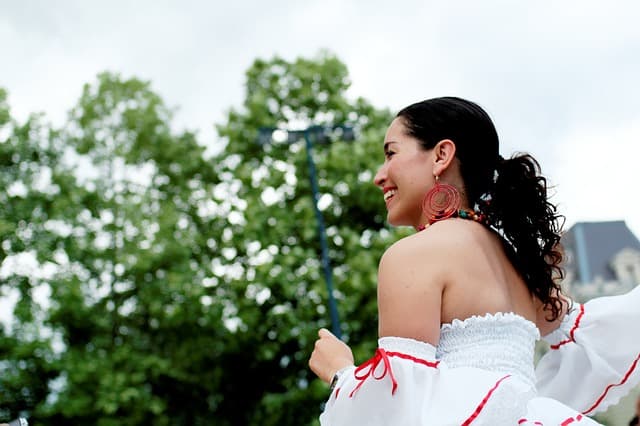Beautiful and laid-back Cienfuegos, called the “Pearl of the South,” was founded on the Caribbean coast on the shores of Jagua Bay in 1819 by French immigrants from Bordeaux and Louisiana. A deep natural harbor made this coastal city one of Cuba’s most important seaports during the colonial period. Before a settlement was established on this site, however, construction began here in 1740 on Fort Castillo de Jagua to protect the area from pirate raids. The fort was accessed across the moat by a lift bridge, which is now lowered especially for tourists.
Fort Castillo de Jagua
Fortress of Jagua is the only Spanish military fortress, built in 1742, was the third largest in Cuba. Famous 16th century flibusters Jacques de Sorosa, Francis Drake, John Morgan, Jean Fearless and Hilberto Chiron each visited Jagua Bay at one time or another. They were the culprits behind the smuggling that flourished in the region at the time. Military engineer Joseph Tantete Dubruller was ordered in 1733 to immediately undertake the construction of the castle, which would be completed 12 years later. The original name of the citadel was Castillo de Nuestra Señora de los Angeles de Jagua, the Fortress of Our Lady of the Angels of Jagua.
In 1763, the fort would again be at the center of hostilities, taking part in the rescue of the capital during the capture of Havana by the British.
On October 10, 1978, the fort was declared a national monument, and on March 24, 1998, a museum was opened here
Cienfuegos is considered a Cuban gem of architecture of the XIX century. It stands out for its perfect street layout and the elegance of the buildings in the historic center of the city. The city’s wide and straight streets intersect at right angles and the architecture is dominated by late neoclassicism. Old buildings, churches and castles, as well as city squares are located near the coast. The center of Cienfuegos was declared a UNESCO World Heritage Site in 2005.
Parque Jose Marti
Parque Jose Marti, located in the eastern part of Cienfuegos, is considered one of the most beautiful parks in Cuba.
The two marble lions that jealously guard the entrance to the park today, appeared in the square in 1862. They were purchased in New York on behalf of Colonel José de la Pezuela, the governor of Cienfuegos.
In the nineteenth century the square was named Plaza Real de San Fernando, later it was called Paseo de Serrano, Plaza de Recreo and it was not until the beginning of the twentieth century that it was named after José Martí.
In 1840, a monument to Isabel la Católica, Queen of Spain, was erected in the park. The sculpture was dismantled at the end of the War of Independence. In 1906, a statue of José Martí was erected in its place, a beautiful work by Italian sculptor Giovanni Nicolini.
Of particular note is the Catedral de Nuestra Señora de la Purísima Concepción, a neoclassical church with two towers of different heights. The parish church was inaugurated in 1833. At that time it did not yet have a portico /enclosed gallery with columns adjacent to the building/ or a bell tower. The first tower was built in 1850, at the same time the altar was created. In 1852 – 1861 two new altars were built. The second tower was completed in 1869. Later, thanks to donations from wealthy citizens, the cathedral was decorated with stained glass windows depicting the 12 Apostles. Donations were also used to purchase bronze domes, marble for the floor, as well as other interior elements. In the 20s of the last century an organ was installed in the cathedral.
Thomas Terry Theater
The Thomas Terry Theater on the north side of the park is a beautiful two-story building with five arched entrances on the second floor and massive square windows on either side of a central balcony on the second floor. Above the central windows of the theater are three mosaics depicting Graces. In addition, the building is richly decorated with stucco inside and out. The theater was named after the governor of Cienfuegos, a wealthy industrialist with whose money it was built. A marble statue of Thomas Terry can be seen in the lobby. In 1889, the theater opened its doors to the public, opening its first season with the opera “Aida”.
Cienfuegos is also called the “Paris of Cuba” and the city has its own “Arc de Triomphe” – the only one in Cuba. It is dedicated to Cuban independence. Nearby you can see the monument to Jose Marti
Playa Guajimico Beach
I recommend visiting Guajimico Beach – a picturesque corner formed by the Caribbean Sea, mountains and the mouth of the La Jutia River. Guajimico is an ideal place for those who prefer extreme diving and other experimental ways of sea diving. You can discover an underwater world with a huge number of coral species and a colorful variety of fish thanks to the many dive sites.
Among the main attractions of this place are the excursions to the Grande and La Virgen caves, which last approximately one and a half hours.



